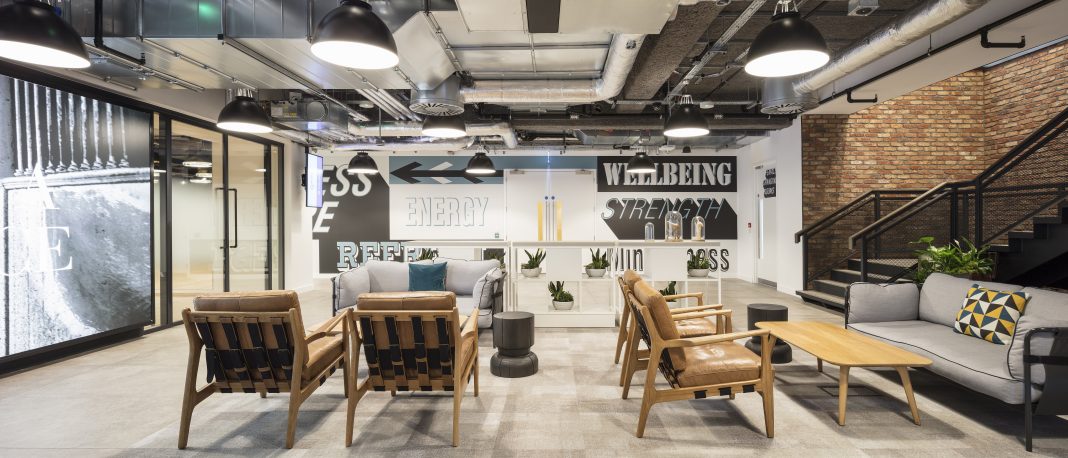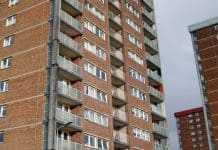The impact of poor acoustics in buildings has been well documented – and many of us understand just how distressing excessive levels of noise can be, be it in a home or office environment. The truth of the matter is that it can even lead to adverse health effects, increasing the risk of heart disease, diabetes, heart attacks and strokes, says Ben Hancock of Oscar Acoustics
For the likes of housing developers and building owners, the harmful effects of excessive noise are now becoming a pain-point. Life during lockdown and the densification of our cities has highlighted how many structures simply aren’t fit for purpose when it comes to acoustic solutions and sound management.
This has kick-started a “sound revolution”. As well as meeting regulatory requirements, developers and building designers are now looking at ways to create healthy sound environments, where reverberation – a main driver for excessive noise, is absorbed, resulting in better communication and lower stress levels.
Kill the noise
With the take-up of hybrid working, the conversation around employee welfare has become a hot topic. Control of Noise at Work Regulations state that daily or weekly, noise levels should reach no higher than 87dB and peak sound pressure, 140dB. The level of excessive background noise in workspace environments should not be understated – over time, it can dramatically impact staff’s ability to think coherently. Think of it as a poorly tuned radio, where the constant fizzing of white noise interferes with what the radio presenter is saying. It can have the same effect on our brains.
The right tools for the job
There are tools available to improve our acoustic standards. Ideally, these solutions will be worked into the design phase of a build – after all, room acoustics are influenced by room geometry and distribution of acoustic absorption. However, solutions can be included as part of general room finishes or the introduction of sound absorbing products, with the right know-how.
One of the biggest bugbears of occupants within flats and apartments, and also that of offices, is overhead sound transfer. Cavity gaps in walls and ceilings allow sound to travel through as there is no insulation barrier in place. Increasingly, cavity insulation is being used to combat this by creating “dead air” spaces between and within its fibres. They can either be sprayed in the wall cavity before a void is closed or they can be blown through holes to improve the acoustic insulation of walls and ceilings.
Another option is the use of fire-rated acoustic hangers, which tackle the problem of noise transfer between floors and ceilings in any space. They can be fixed directly under existing ceilings without disruption to the floors above, losing as little as 6mm of ceiling height. Contractors should look for acoustic hangars that have an approved BRE fire rating of over 90 minutes and that are compliant with British Building Regs Approved Document E for airborne and impact sound.
Spray to keep the noise at bay
Treatments like fire-rated acoustic sprays or acoustic plaster for walls and ceilings can also significantly reduce reverberation by absorbing sound energy instead of reflecting it. These acoustic systems also allow complete flexibility with Cat A and Cat B configuration allowing for dividing structures such as office pods to be brought in without disrupting the acoustic spray finish on the ceiling above.
Smooth or deliberately coarsely textured, acoustic spray products for interior walls or ceilings are available and can be spray-applied at speed. It’s even possible to specify a through-coloured option, meaning there will be no need for decoration; this will also minimise the need for repair over time and offset the cost. High quality sprays will also conform to any surface shape and bond to virtually all common construction materials including plaster, wood, metal and concrete.
With fire safety now a major focus, acoustic sprays that go beyond Approved Document B fire requirement (Class 0 to BS476 & B-s1, d0 fire rating), will offer reassurance that should an event occur, the acoustic spray would provide little to no smoke and absolutely no droplets, assisting in the safe escape of occupants.

What are the benefits?
WELL Building Standards recommends the use of acoustic materials that absorb sound “to support concentration and reduce reverberation”. As such, “sound reducing surfaces” are listed in the WELL V2 accreditation document, which awards two points to buildings that have undergone a specialist treatment, such as an acoustic finish.
There are environmental benefits too. High quality sprays made of recycled, natural plant-based fibres and specialist water-based adhesives can contribute towards many sustainable design and health certification systems including BREEAM, SKA, Living Building Challenge and adds up to 17 points towards the LEED (Leadership in Energy and Environmental Design) rating of a project.
As JLL recently confirmed in its report the Impact of Sustainability on Value new Grade A office buildings in central London with a BREEAM rating of Very Good or better achieved higher rents than those without a rating.
Being aware of the regs
Contractors looking to get a handle on the latest regulations and to learn more can do so by referring to the handy checklist below:
- Minimum standards for soundproofing residential buildings in England and Wales.
- For dwellings: Building Regulations Document E.
- Control of Noise at Work Regulations Sound levels should be no higher than:
- Daily or weekly exposure of 87 dB
- Peak sound pressure of 140 dB
Under the regulations, the internal airborne sound resistance inside any dwelling must be a minimum of 40dB. It applies to walls and upper floors between bedrooms and other rooms (there is one exception: any wall that has a door in it and walls to en suite bathrooms).
For impact sound such as footsteps, jumping and dropped objects, a maximum impact sound transmittance level of 62dB is set for floors and stairs in new builds. A maximum of 64dB is set for conversion projects.
Ben Hancock

Managing director
Oscar Acoustics
Tel: +44 (0)1474 854902
Twitter: @oscaracoustics
LinkedIn: Ben Hancock
YouTube: OscarAcoustics
Instagram: @oscar_acoustics














